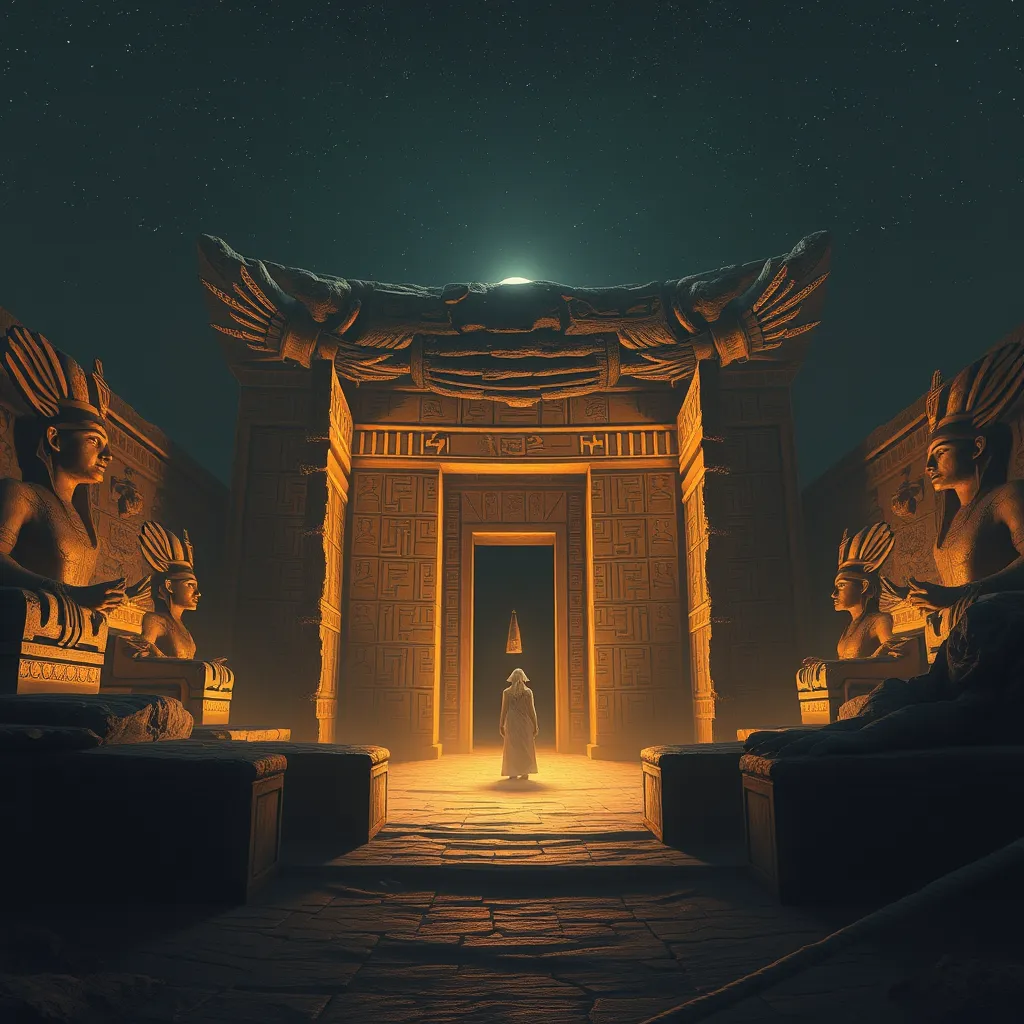The Duat: A Sanctuary for the Dead
I. Introduction to the Duat
The Duat, often referred to as the underworld in ancient Egyptian belief, represents a crucial component of the Egyptian understanding of life after death. It is not merely a realm of the dead but a complex landscape filled with challenges and trials that the deceased must navigate. The significance of the Duat lies in its role as a sanctuary where souls undergo judgment and transition to the afterlife, embodying the belief that life continues beyond the physical realm.
II. The Mythological Context of the Duat
The origins of the Duat are deeply rooted in Egyptian mythology, where it is often depicted as a dark, mysterious realm that exists beneath the earth. According to ancient texts, the Duat is governed by various deities, with Osiris, the god of the afterlife, being the most prominent figure. Osiris presides over the judgment of souls, while Anubis, the god of mummification and the afterlife, plays a crucial role in guiding the deceased through the Duat.
Key deities associated with the Duat include:
- Osiris: Ruler of the Duat and judge of the dead.
- Anubis: Guide of souls and protector against evil.
- Isis: Goddess of magic and motherhood, often invoked for protection.
- Thoth: God of wisdom, who assists in the judgment process.
III. The Structure and Geography of the Duat
The Duat is often described as a vast expanse filled with various landscapes and realms. These include rivers, deserts, mountains, and fields that reflect the complexity of the afterlife journey. The geography of the Duat is symbolic of the trials that the deceased must face, with each location holding specific significance.
Key locations within the Duat include:
- The Field of Reeds: A paradise for the worthy souls, akin to a heavenly afterlife.
- The Lake of Fire: A place of punishment for the unworthy.
- The Hall of Two Truths: The site of judgment where the heart of the deceased is weighed against the feather of Ma’at.
IV. The Journey through the Duat
The journey through the Duat begins immediately after death, where the soul is believed to travel through various challenges and obstacles. This journey is fraught with dangers, including malevolent spirits and fierce creatures that seek to hinder the deceased.
During this journey, the deceased must:
- Navigate a series of gates guarded by formidable beings.
- Present spells and prayers to overcome obstacles.
- Face the judgment of Osiris, where their heart is weighed against the feather of Ma’at, the goddess of truth and justice.
V. The Role of the Book of the Dead
The Book of the Dead, a collection of spells and texts, plays a vital role in the navigation of the Duat. This ancient manuscript serves as a guide for the deceased, providing instructions and incantations that help them successfully pass through the various trials of the afterlife. The spells contained within the Book of the Dead are meant to protect the soul and ensure safe passage.
Key aspects of the Book of the Dead include:
- Spells for Protection: Incantations that shield the deceased from malevolent forces.
- Guidance for the Journey: Directions for navigating the Duat and reaching the afterlife successfully.
- Judgment Rituals: Texts that prepare the deceased for the weighing of the heart.
VI. Rituals and Practices Related to the Duat
To assist the deceased in their journey through the Duat, ancient Egyptians engaged in a variety of funerary practices. These rituals were designed to honor the dead and provide them with the necessary items and prayers for their journey.
Common practices included:
- Mummification: Preserving the body to ensure continuity in the afterlife.
- Burial Offerings: Providing food, drinks, and personal items to aid the deceased.
- Funeral Rites: Ceremonies to honor the deceased and invoke blessings.
VII. Symbolism and Art Depicting the Duat
The Duat has been a significant theme in ancient Egyptian art, with many tombs and temples featuring elaborate depictions of its landscapes and the journey of the soul. These artistic representations serve not only to honor the deceased but also to convey the deeper meanings associated with the afterlife.
Symbolism in Duat-related art includes:
- Imagery of Osiris: Representations of the god of the afterlife, often depicted in mummified form.
- The Feather of Ma’at: Symbolizing truth and justice, crucial in the judgment process.
- Scenes of Judgment: Artistic portrayals of the heart being weighed against Ma’at’s feather.
VIII. Conclusion: Legacy of the Duat in Modern Culture
The Duat’s influence extends beyond ancient Egypt, resonating in contemporary interpretations of the afterlife. It has inspired various cultural narratives, literature, and artistic expressions, reflecting humanity’s ongoing fascination with death and what lies beyond.
Today, the Duat represents a rich tapestry of beliefs that invites reflection on life, death, and the possibility of an afterlife. As modern society continues to explore these themes, the legacy of the Duat endures, serving as a testament to the ancient Egyptians’ profound understanding of existence.




